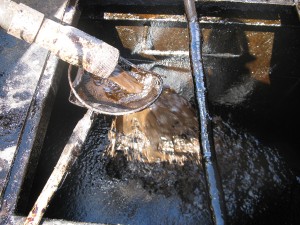White House touts shale gas revolution’s role in reviving US manufacturing

Manufacturing
Source: Siemens USA
If you’ve noticed more “Made in America” labels, keep in mind it was made possible by the US shale revolution
by Seth Whitehead, EnergyInDepth
EID has highlighted many times how cheap and abundant shale natural gas, made possible by hydraulic fracturing, has brought manufacturing back to life in America.
And to celebrate Manufacturing Day last Friday, the White House National Economic Councilreleased a report entitled “Revitalizing American Manufacturing” that further illustrates how the shale boom has been instrumental to lifting the U.S. out of the depths of the Great Recession.
The report notes that since early 2010, U.S. manufacturing has added over 800,000 direct jobs. This is a remarkable reversal of fortunes, considering the manufacturing sector lost 5.7 million jobs — roughly one-third of all manufacturing workers — from 2000 to 2009, a higher share of jobs lost than during the Great Depression, proving particularly invigorating to traditional manufacturing hubs such as the Appalachian Basin, the Ohio Valley and Texas.
So considering one fifth of manufacturing is energy intensive — including plastics, fertilizers,chemicals, and steel manufacturing — its not surprising the report credits record low natural gasprices and production for turning things around.
“The surge in American natural gas production has lowered energy costs for manufacturers and driven job growth… Recent analysis estimates that industrial sector consumers of natural gas were better off by about $22 billion between 2007 and 2013 due to abundant, inexpensive shale gas. That is an important part of why companies have announced tens of billions in new capital commitments in energy-intensive manufacturing facilities that will come on line in the years ahead.”
The U.S. chemical industry alone has invested $164 billion in shale gas projects, which are the direct result of shale gas production increasing 155 percent since 2010, while overall U.S. natural gas production has increased 27 percent. Thanks to this remarkable production, natural gas prices have remained well below $4 mcf since November 2014. This combination has boosted American chemical exports, sparked reinvestment in the United States and created booms within the plastic and fertilizer industries. The report fully acknowledges these remarkable trends.
“Once poised to be a major natural gas importer, the United States is now the number one natural gas producer in the world…
“Since the Great Recession, manufacturing has grown at nearly twice the pace of the economy overall, marking the longest period where manufacturing has outpaced U.S. economic output in 50 years… the job gains between 2010 and early 2014 are about 500,000 above and beyond what would be associated with the historical cyclical pattern.”
The report also notes that because fracking is driving down energy costs considerably forbusinesses, the U.S. is not only competitive with other countries — we actually have a competitive advantage. U.S. natural gas prices are half of Europe’s and one third of Asia’s, according to the report.
“… U.S. direct manufacturing production costs compare favorably to other advanced economies, particularly due to the high productivity of American workers and the low energy costs as a result of abundant natural gas. According to The Boston Consulting Group, the U.S. relative costs of production in 2014 were within 5 percent of those of China and substantially less than countries like Japan, Canada, Brazil, France, and Germany.”
Another recent report finds that U.S. manufacturing could actually be cheaper than China by 2018 thanks to natural gas.
These trends are all-the-more relevant to the average American because, as the report notes, as U.S. manufacturing, so goes America.
“A strong manufacturing sector is vital to America’s economic progress because it is inextricably linked to our country’s ability to innovate. Despite representing only 12 percent of U.S. GDP, manufacturing accounts for roughly 75 percent of private sector research and development, 60 percent of all U.S.”
President Obama has long credited shale development for driving down energy costs and spurring, in turn, a manufacturing renaissance in the United States that is creating jobs and growing our economy. As he said in November 2014:
“When I travel to Asia or I travel to Europe, their biggest envy is the American, homegrown, U.S. energy production that is producing jobs and attracting manufacturing because locating here means you’ve got lower energy costs.” [Emphasis added.]
President Obama has also said:
“Meanwhile, our 100-year supply of natural gas is a big factor in drawing jobs back to our shores. Many are in manufacturing — the quintessential middle-class job.”
So if you’ve noticed more and more “Made in America” labels lately, keep in mind it was made possible by the U.S. shale revolution.
Originally posted Oct 10, 2016 at EnergyInDepth

Ph: 432-978-5096 Website: www.mapleleafmarketinginc.com








